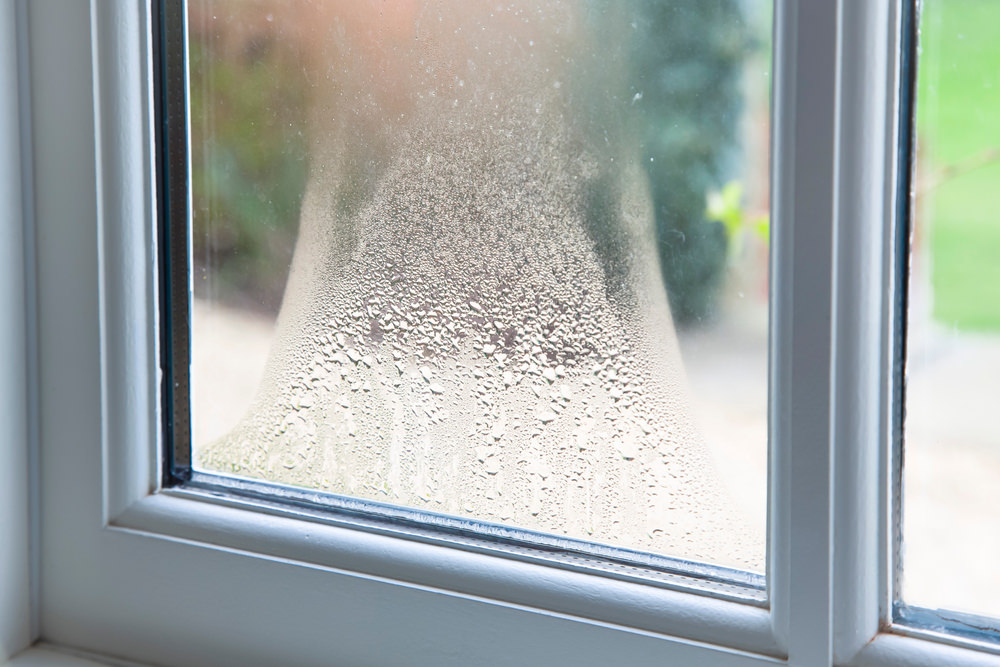
Timber - PVC - Aluminium - Windows, Doors & Conservatories in Hampshire
The Ultimate Guide to Double Glazing Condensation: Inside, Outside & Between the Panes
The Ultimate Guide to Double Glazing Condensation: Inside, Outside & Between the Panes
Topic: Home Maintenance & Repair
Region: Andover, Hampshire & Wiltshire
📌 The 30-Second Diagnosis
Before you spend money on repairs, you must identify where the moisture is sitting. It makes the difference between a free DIY fix and a replacement unit.
It is the most common question we get at our Andover showroom: “I bought new windows to stop condensation, so why do I still have it?”
Condensation is naturally occurring. It happens when warm, moist air hits a cold surface (the Dew Point). Your windows are simply the coldest surface in the room, so they act as a “warning light” for humidity levels in your home.
Table of Contents
1. Internal Condensation (Lifestyle & Health)
If the water is on the side of the glass you can touch from the inside, this is not a window fault. It is a ventilation issue.
The Science: Dew Point
Air contains invisible water vapour. Warm air can hold more water than cold air. When warm air in your home (heated by radiators) hits the cold glass surface, it rapidly cools down. As it cools, it loses the ability to hold onto that moisture, releasing it as liquid water droplets. This is the Dew Point.
A typical Hampshire family of four produces 14 litres of water vapour a day just by breathing, cooking, and showering. If that water has nowhere to go, it settles on the glass.
⚠️ The Health Risk: Black Mould
Ignore wet windows at your peril. Constant moisture on frames leads to Black Mould (Stachybotrys chartarum). According to the NHS, inhaling or touching mould spores can cause:
- Respiratory issues (wheezing, coughing).
- Asthma attacks.
- Allergic reactions (sneezing, red eyes).
This is why managing humidity is vital for your health, not just your view.
✅ KJM’s Ventilation Checklist
2. How to Safely Clean Black Mould
If you already have mould growing on your sealant or frames, you must remove it carefully to avoid spreading spores.
🧽 The Removal Recipe (Step-by-Step)
Safety First: Wear rubber gloves, safety goggles, and a mask. Do not scrub dry mould, as this releases spores into the air.
- The Solution: Create a mix of 1 part bleach to 4 parts water. Alternatively, use a 50/50 mix of white vinegar and water (effective for porous surfaces).
- Apply: Spray or dab the solution onto the mould.
- Wait: Let it sit for 15-20 minutes to kill the fungus roots.
- Wipe: Clean with a damp cloth, then dry thoroughly with a clean, dry cloth.
- Dispose: Throw away the cloths immediately.
3. The “New Window Paradox”
Customers often tell us: “My old draughty windows didn’t have this problem!”
They are right, but for the wrong reason. Your old windows were draughty. The wind whistled through the gaps, carrying the moisture away. It solved the condensation, but it also carried away all your expensive heat!
The Reality: Modern windows are airtight to comply with Building Regulations (Part L). Because they seal the house so effectively, they trap the heat AND the moisture. This is why you must actively ventilate.
4. External Condensation (Efficiency)
If you wake up on an Autumn morning and find mist on the outside of your windows (in the garden), do not panic.
🏆 It’s a Badge of Honour
This only happens on high-performance, energy-efficient windows (Low-E glass), typically in Spring and Autumn.
It proves that your inner pane is keeping all your heat inside the house, meaning the outer pane is staying cold. Because the outer glass is cold, dew forms on it—just like it does on the grass or your car.
Want to know more? Read our detailed post: Why External Condensation is a Good Sign.
5. Failed Units (Between Panes)
If you see water droplets, mist, or “fog” between the two sheets of glass (where you cannot wipe it off), the unit has failed.
This means the perimeter seal has perished, allowing moist air to enter the cavity and the insulating gas (Argon) to escape. This often happens due to age or thermal stress.
❌ Can it be repaired?
Generally, no. We cannot “clean” the inside of a sealed unit. Some companies offer to drill holes, but this destroys the thermal efficiency. The only fix is replacement.
The Good News: You don’t need a whole new window frame! We can usually just pop out the old glass unit and fit a new, energy-efficient one into your existing frames.
📥 Free Downloadable Guides
Want the technical details? Download the official industry guides here.
7. Frequently Asked Questions
Yes, absolutely. A dehumidifier or a PIV (Positive Input Ventilation) system is the most effective way to cure condensation in modern airtight homes.
Condensation between the panes (seal failure) is covered by our 10-year guarantee. Condensation on the surface (lifestyle/ventilation) is not a product fault and is not covered.
Overnight, the temperature outside drops, cooling your windows. At the same time, you are asleep in the house, breathing out moisture for 8 hours with the doors/windows closed. This combination creates the perfect conditions for morning mist.
New windows are airtight. Your old windows were draughty, which allowed moisture to escape (along with your heat). New windows trap the heat but also the moisture, so you must use trickle vents.
- 2026 Design Trends: The 4 Window & Door Styles Defining the Year - 19 December 2025
- The 2026 Glazing Outlook” – High-level summary of the pivot to growth. - 9 December 2025
- Industry News: The Future Homes Standard 2025 & What It Means for Your Windows - 1 December 2025














